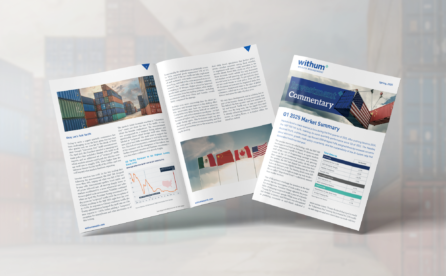Earlier this week, the Federal Reserve instituted their third 0.75% interest rate hike in as many meetings, bringing the federal funds rate to a range of 3.0 to 3.25%. While that was widely expected, the Fed gave a forecast for future hikes that showed more hikes and holding rates higher than the market had priced in. The Fed is expecting rates to be around 4.4% later this year, 4.6% at the end of 2023 and ease to 3.9% by the end of 2024 as inflation finally calms towards their 2% target. Since Wednesday, the market has fallen, rates are up across the yield curve and the dollar is surging. The days of cheap money and quantitative easing that went on too long are a distant memory, and in hindsight, a clear monetary policy error that the Fed is now unwinding.
In Fed Chairman Jerome Powell’s Jackson Hole speech there was a singular word he used that struck a negative chord with the market – “Pain”. The original line was “While higher interest rates, slower growth, and softer labor market conditions will bring down inflation, they will also bring some pain to households and businesses.” Fast forward to Wednesday’s press conference, and he used the word seven times in answers to reporters questioning. “Transitory” was so 2021.
While Powell is busy talking about pain, we need to describe what pain means. The economy, today, is OK. Yes, GDP was technically negative, due to import abnormalities in Q1 and Q2 of this year. The Atlanta Fed projection for Q3 GDP sits at just 0.3% and has been falling. That does not tell the whole story though – with inflation around 6-8% depending on your measure of choice, real GDP is virtually flat. The economy is producing above trend, but due to inflation being high, it is not keeping up. Wages are rising at their fastest pace in the last decade, but also not keeping up with inflation. The consequences, which we saw in FedEx earnings commentary two weeks ago is that companies are going to start to feel this affecting their bottom line. Facebook (the jury is out on “Meta” in our mind) this week announced an effort to cut costs by 10%. How do companies cut costs? Among other ways, by ceasing hiring or cutting employees in areas of excess. Across the economy, the unemployment rate will rise, people on the margin will not be able to afford housing and will ease up on discretionary spending. This is how a recession happens.
The words “it’s different this time” are easy to rationalize – we have not had a pandemic like this in a century, so surely, we cannot bank on historical norms! Maybe we can – history does not repeat itself, but it often rhymes. The reason for a recession could be different… technology bubble and a halt of travel from 9/11, or a housing crisis, or an oil embargo, or a war, etc. But the effects of a recession – people losing their jobs and spending drying up, are the same.
So, what are investors supposed to do? And how are we combatting this potential market risk? These are valid questions, but it is not time to panic. Both stocks and bonds are off to record breaking poor returns to start the year but we have insulated portfolios from volatility in several ways. By avoiding non-profitable tech – many of the bubblicious “story” stocks of 2020 and 2021, we have insulated portfolios from dramatic losses. By purposefully shortening our bond maturities and duration in the face of rising rates, we have alleviated bond losses as well. These may not be entirely comforting words to hear as we acknowledge any losses are painful as they happen. Moving forward we are looking to utilize treasuries more and may begin lengthening our duration to lock in favorable +4% rates for longer in some of the safest investments on the planet. On the equity side of the equation, focusing on cash flow positive companies, with some degree of pricing power is paramount.
At the end of the day, our duty to our clients is to manage risks and understand each investors time horizon for these investments is crucial. Eventually, Powell’s pain will end and brighter days are ahead – they always are. It is equally important to recognize that these “point in time” forecasts can change at any moment. Should Powell recognize the Fed induced pain is working, inflation is coming down or some combination of the two, they could pivot quickly, causing investors and consumers to see the brighter days ahead. It is important to remember that recessions are generally good times to put money to work in stocks for long term growth. Today, the outlook looks bleak, but stocks are always looking to the future and a recovery will come.
As always, if you have questions or would like to re-evaluate your portfolio allocation, we are available and welcome those conversations.


